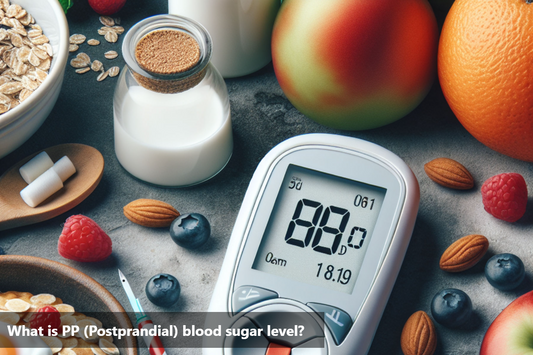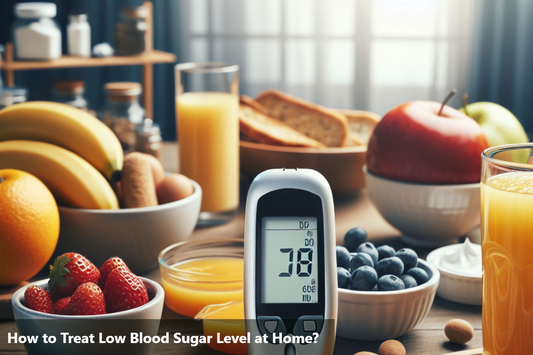The healing process of wounds in diabetic individuals is crucial due to potential complications from slow healing. High blood sugar levels hinder tissue repair, poor circulation deprives wounds of nutrients and oxygen, and nerve damage can reduce sensitivity to pain. We must address these factors to expedite wound healing, implementing proactive wound management and specialized treatments in a team-based approach.
Factors affecting wound healing in diabetic patients
High Blood Sugar
Having too much sugar in your blood when you have diabetes can make it harder for your body to fight infections and heal wounds properly.Nerve Damage
Nerve damage from diabetes can make it hard to feel pain in your arms and legs, so you might not notice small cuts or injuries that could turn into serious problems.Poor Blood Circulation
Diabetes can make your arteries narrow or get blocked, which reduces the flow of blood and oxygen to wounds. This can slow down healing and lead to more complications.Damage to Tiny Blood Vessels
Diabetes can harm the small blood vessels in your body, which can affect how well your wounds heal and make infections more likely.Constant Inflammation
Diabetes can cause ongoing inflammation that makes it harder for wounds to heal properly and increases the risk of infections.Infections
People with diabetes are more prone to infections because of a weak immune system, poor blood flow, and fragile tissues. Infections can make wounds worse and cause serious health issues.Lack of Proper Nutrition
If you don't eat well because of diabetes-related reasons, it can slow down wound healing due to a lack of essential nutrients.Smoking
Smoking is harmful for healing wounds in diabetic patients as it reduces blood flow, oxygen supply, and immune function needed for proper healing.Medications
Some diabetes medications can weaken the immune system and slow down wound healing, while others may affect blood clotting, making wounds take longer to heal.Emotional and Mental Health
Feeling stressed, sad, or not following your diabetes treatment plan can also affect how well wounds heal by disrupting your body's defenses and self-care routines.
Treatment options to promote faster wound healing
Promoting faster wound healing in diabetic patients requires a comprehensive approach that addresses the underlying factors contributing to delayed healing. Here are some treatment options commonly used to accelerate wound healing in diabetic individuals:
Cleaning the Wound: It's important to remove dead or infected tissue from the wound to help it heal. This can be done using different methods like cutting it out, using special enzymes, cleaning it mechanically, or letting the body break it down naturally with the help of dressings.
Preventing Infections: It's crucial to quickly manage and treat any infections in the wound to help it heal faster. Using antibiotics on the skin or in the body can kill the germs causing the infection. Testing the wound can tell us what germs are there and which antibiotics will work best.
Keeping the Wound Moist: Having a slightly wet wound can help it heal faster by encouraging cells to move and grow, as well as forming new tissue. Dressings like gels, foam, or films can keep the wound damp while absorbing extra fluid.
Using Special Products: Some advanced products like growth factors or synthetic skin can speed up the wound healing process. These products help create new cells, blood vessels, and tissue, making repairs and regrowth happen faster.
Negative Pressure Treatment: Applying a vacuum to the wound bed can help reduce swelling, boost blood flow, and encourage new tissue growth. This method is great for big or complicated wounds.
Oxygen Therapy: Increasing the oxygen levels in a chamber can improve healing by giving tissues more oxygen, helping new blood vessels form, and making white blood cells kill germs better. It's useful for hard-to-heal wounds with circulation or infection problems.
Reducing Pressure: Taking weight off foot ulcers in diabetic patients is vital for healing and preventing more ulcers. Using special shoes or casts can shift pressure away from the sore and ease strain on the skin.
Eating Right: Getting enough nutrients is crucial for wound healing. Diabetic patients might need extra protein, vitamins (like C, A, and E), and minerals (such as zinc and iron) to help the body make new tissue, fight infections, and fix damage.
Managing Diabetes: Keeping blood sugar levels in check and looking after other health issues like nerve or blood vessel problems is crucial for wound healing in diabetic patients. This can lower infection risks, boost fighting infections, and help with tissue repair.
Team Support: Working with a group of experts, including wound care specialists, foot doctors, surgeons, nutritionists, and therapists, can give diabetic patients with long-lasting sores the best care and help possible. Cooperation across different specialties ensures all areas of care are handled well.
Lifestyle changes for improved wound healing
Lifestyle changes are important for helping wounds heal faster in diabetic patients. One key factor is eating a healthy diet with lots of nutrients needed for healing. Eating foods with lots of vitamins, minerals, and protein can give the body what it needs to repair tissues.
Getting regular exercise is also crucial for improving healing in wounds for people with diabetes. Doing physical activities can make blood flow better, which is often a problem in diabetes. This helps bring nutrients and oxygen to the wound area more efficiently. Exercise also boosts overall health, which can help the body heal better.
Stopping smoking is a must for diabetic patients who want their wounds to heal quickly. Smoking makes it harder for blood to flow, slows down tissue repair, and weakens the immune system. These things all make it harder for wounds to heal. If people quit smoking, they can greatly improve their chances of healing properly.
Taking good care of the feet is crucial for preventing problems and helping diabetic foot wounds heal. Checking the feet regularly, keeping the skin clean and moisturized, and wearing the right shoes can prevent injuries and infections that might slow down healing. By looking after their feet well, diabetic patients can actively help wounds heal and lower the risk of more problems.
Bottom Line
Diabetic patients have difficulty healing wounds due to factors like high blood sugar, poor circulation, nerve damage, and weakened immune system. These problems cause slow healing and increase infection risk. To help, managing diabetic wounds promptly is essential for faster healing.
By controlling blood sugar with medicine, diet, and lifestyle changes, people create a better environment for healing wounds. Proper wound care, like cleaning and dressing wounds correctly, prevents infections and speeds up healing.
Advanced treatments like hyperbaric oxygen therapy also help in improving wound healing for diabetic patients. By quickly getting treatment and following care plans, individuals can boost their chances of healing well and improve their quality of life.
Key Points:
Manage diabetic wounds promptly for faster healing.
Control blood sugar levels through medication, diet, and lifestyle changes.
Practice proper wound care to prevent infections and aid healing.
Consider advanced therapies like hyperbaric oxygen therapy.
Follow treatment plans and seek timely medical attention for better healing outcomes.
This Blog post is an initiative by DiabeSmart, to provide accurate and Nutritionist / Doctor approved information related to Diabetes. DiabeSmart is India's first Food brand designed specifically for Diabetics, that has been clinically tested on Diabetics and Pre-Diabetics to deliver 55% - 70% lower Sugar spikes. DiabeSmart is part of Lo! Foods - India's leading brand for Everyday Functional Health foods.













